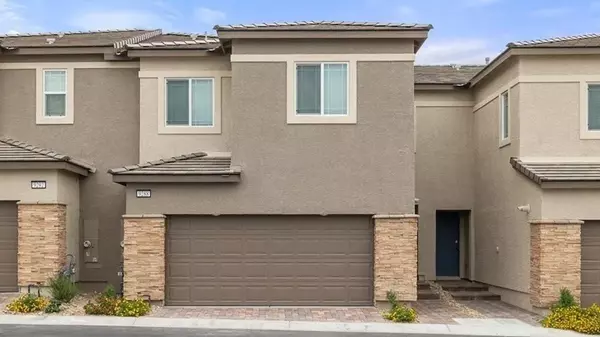Homeowners Have Gained Almost $150K in Wealth Over the Past 5 Years


Realtor.com
If you own a home, congratulations: You likely gained six figures in equity since 2019.
“A typical homeowner accumulated $147,000 in housing wealth in the last five years,” said National Association of Realtors® Chief Economist Lawrence Yun in the latest quarterly report.
That’s a profit of $29,400 per year—nearly half of the average U.S. salary.
But even with the rapid price appreciation over the past few years, the likelihood of a housing market crash is minimal, according to Yun.
“Distressed property sales and the number of people defaulting on mortgage payments are both at historic lows,” said Yun.
Prices spiked in the third quarter
Gains in home equity weren’t limited to some regions of the country either. Approximately 90% of metros experienced home price gains in the third quarter of 2024, as the 30-year fixed mortgage rate ranged from 6.08% to 6.95%.
Single-family existing-home sales prices climbed in 87% of the measured metro areas—196 of 226—in the third quarter, down from 89% in the prior quarter.
Fifteen markets—or 7%—experienced double-digit annual price appreciation, down from 13% in the previous quarter.
“Home prices remain on solid ground as reflected by the vast number of markets experiencing gains,” said Yun.
The national median single-family existing-home price grew 3.1% from a year ago, to $418,700, according to the NAR.

Getty Images
The South and Northeast lead the way
Where did homes fly off the listing pages the most in July through September? Of all the single-family existing-home sales in the U.S., 45.1% were in the South.
However, the Northeast came out on top regarding home prices, with a 7.8% increase year over year.
It was followed by the Midwest, at 4.3%; the West, at 1.8%; and the South, at 0.8%.
The 10 largest price increases
Homeowners smack dab in the Midwest have reason to celebrate as Illinois home prices skyrocketed in the third quarter.
Four of the top 10 metros with the largest year-over-year median price increases were in the Prairie State.
Every metro in the top 10 experienced double-digit gains of at least 10.6%.
Take a peek at them below.
1. Racine, WI
Median list price: $310,200
Median price increase: 13.7%

Realtor.com
2. Youngstown, OH
Median list price: $171,100
Median price increase: 13.1%
3. Syracuse, NY
Median list price: $262,200
Median price increase: 13%
4. Peoria, IL
Median list price: $177,100
Median price increase: 12.4%
5. Springfield, IL
Median list price: $191,000
Median price increase: 12.3%

Realtor.com
6. Burlington, VT
Median list price: $534,000
Median price increase: 11.7%
7. Shreveport, LA
Median list price: $234,700
Median price increase: 11.5%
8. Rockford, IL
Median list price: $201,900
Median price increase: 11.1%
9. Decatur, IL
Median list price: $142,200
Median price increase: 10.9%
10. Norwich, CT
Median list price: $399,700
Median price increase: 10.6%

Realtor.com
Most expensive markets in the U.S.
When it came to the priciest markets in the U.S., it’s no surprise that eight of the top 10 were in costly California.
But Hawaii and Colorado also made the cut in the third quarter.
Scroll down for the posh places where homes will set buyers back the most, along with their median price increase (or decrease) year over year.
1. San Jose, CA
Median list price: $1,900,000
Median price increase: 2.7%

Realtor.com
2. Anaheim, CA
Median list price: $1,398,500
Median price increase: 7.2%
3. San Francisco, CA
Median list price: $1,309,000
Median price increase: 0.7%
4. Urban Honolulu, HI
Median list price: $1,138,000
Median price increase: 7.2%
5. San Diego, CA
Median list price: $1,010,000
Median price increase: 3.2%

Realtor.com
6. Salinas, CA
Median list price: $959,800
Median price increase: 1.5%
7. San Luis Obispo, CA
Median list price: $949,800
Median price increase: 6.7%
8. Los Angeles, CA
Median list price: $947,500
Median price increase: 5.6%
9. Oxnard, CA
Median list price: $947,400
Median price increase: 2.8%
10. Boulder, CO
Median list price: $832,200
Median price decrease: -3.0%

Realtor.com
Housing affordability improves
Housing affordability has been a major issue the past few years, but it slightly improved in the third quarter as mortgage rates trended lower.
The monthly mortgage payment on a typical existing single-family home with a 20% down payment was $2,137, down 2.4% from a year ago.
Families typically spent 25.2% of their income on mortgage payments, falling from 27.1% year over year.
“Housing affordability has been a challenge, but the worst appears to be over,” said Yun.
Rising wages are now outpacing home price increases, according to Yun.
“Despite some short-term swings, mortgage rates are set to stabilize below last year’s levels,” noted Yun. “More inventory is reaching the market and providing additional options for consumers.”
Good news for first-time buyers
Sure, houses are still expensive—but first-time buyers experienced slightly better affordability conditions compared with the previous quarter, which offered a glimmer of hope.
For a typical starter home valued at $355,900 with a 10% down payment loan, the monthly mortgage payment declined to $2,097, down 5.5% from the prior quarter.
That was a decrease of $49, or 2.3%, from a year ago—which means payments are moving in the right direction.
Most homebuyers have heard of the “30% rule,” which recommends they spend no more than 30% of their income on a house.
However, the high price of housing means this is no longer feasible today,
First-time buyers typically spent 38% of their family income on mortgage payments, down from 40.6% in the previous quarter.
Just how much did homebuyers need to earn to even qualify for a mortgage like this?
A family needed a qualifying income of at least $100,000 to afford a 10% down payment mortgage in 42.5% of markets, down from 48% in the prior quarter.
However, there are still options out there for people who earn less—although they are few and far between.
In 2.2% of markets, a family needed a qualifying income of less than $50,000 to afford a home—which was down from 2.7% in the previous quarter.
Categories
Recent Posts











"My job is to find and attract mastery-based agents to the office, protect the culture, and make sure everyone is happy! "
